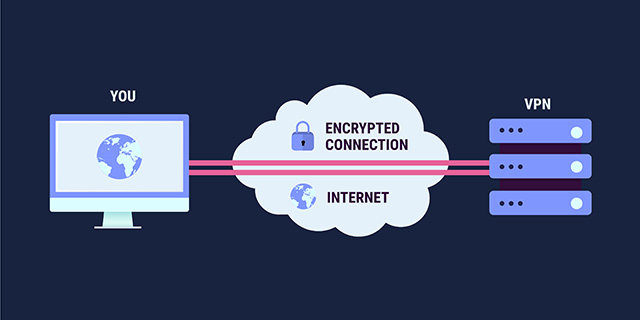Contents
- 1 What is the Raspberry Pi?
- 2 Raspberry pi 4 Projects
- 2.1 Raspberry Pi VPN Server
- 2.2 Raspberry pi 4– Raspberry Pi Portable Hacking Tool
- 2.3 Raspberry pi 4– Raspberry Pi Seismometer (Raspberry Shake)
- 2.4 Raspberry pi 4– Netflix Raspberry Pi Streaming Device
- 2.5 Raspberry pi 4– Raspberry Pi FM Radio Transmitter
- 2.6 Raspberry pi 4– Raspberry Pi Bluetooth Enabled Speaker System
- 2.7 Raspberry pi 4– Raspberry Pi Dedicated Office Productivity Machine
- 2.8 Raspberry pi 4– Raspberry Pi JavaScript Learning Machine
- 2.9 Raspberry pi 4– Raspberry Pi Wi-Fi Booster
- 2.10 Raspberry pi 4– Raspberry Pi Ultrasonic Theremin
- 2.11 Raspberry pi 4– Raspberry Pi Wall Mounted Google Calendar
- 2.12 Raspberry pi 4– Raspberry Pi AI Thermometer
- 2.13 Raspberry pi 4– Raspberry Pi Automatic Smart Plant Monitor
- 2.14 Raspberry pi 4– Raspberry Pi Remote Smart Camera Focus
- 2.15 Raspberry pi 4– Raspberry Pi Intercom System
- 2.16 Raspberry pi 4– Raspberry Pi Photo Booth
- 2.17 Raspberry Pi Sleeping Cycle and Light Alarm Clock
- 2.18 Raspberry Pi Pen Plotter
- 2.19 Raspberry Pi Email Notifier
- 2.20 Brew
- 2.21 Raspberry Pi Light Painter
- 2.22 Raspberry Pi Cluster Computer
- 2.23 Raspberry Pi Smart Garage Door Opener
- 2.24 Raspberry Pi Android TV Box
- 2.25 Raspberry Pi Object Tracker
- 2.26 Raspberry Pi ADS-B Receiver
- 2.27 Raspberry Pi Christmas Tree Light Show
- 2.28 Raspberry Pi PirateBox
- 3 Conclusion
What is the Raspberry Pi?
The Raspberry Pi is one of the most affordable single-board computers (SBCs) on the market. It is arguably the most popular. Although The Raspberry Pi Foundation released its first board in 2012, it has been around since 2006. At the time of writing this article, their latest SBC was the Raspberry Pi 4.
It came in four flavors: 1GB, 2GB, 4GB, and 8GB. In addition to this, the Raspberry Pi 4 specs include a quad-core 1.5 GHz processor, wireless LAN, Bluetooth 5, 2 USB 3.0 ports, 2 USB 2.0 ports, 2 micro HDMI ports, and a micro SD card slot. The Raspberry Pi 4 is available on Amazon.
In this guide, we will cover all the projects you can build using the Raspberry Pi 4. However, it is important to note that you will need additional accessories to build most of these projects. Thus, a short overview accompanies each suggestion on this list to make things easier for you. Without further delay…
Raspberry pi 4 Projects
Raspberry Pi VPN Server
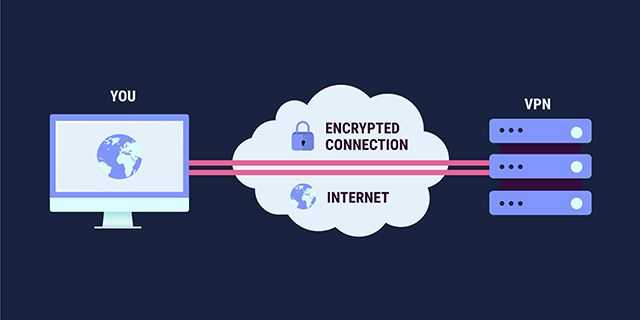
As you may or may not know, VPN stands for a virtual private network. A VPN helps you secure your data when you connect to the internet. It also helps you mask your IP address and hide your geo-location.
You can convert your Raspberry Pi 4 into a dedicated VPN server using PiVPN. What makes the Raspberry Pi well suited as a VPN Server is its affordability and size. In addition to this, you can run both your wireless and wired connections through it.
Prerequisites
Converting your Raspberry Pi into a VPN server is not particularly demanding. Besides your Raspberry Pi 4 Model B SBC, all you need is the following:
- A power source for your Raspberry Pi 4
- A microSD card with a storage capacity of at least 8GB
[video]
Raspberry pi 4– Raspberry Pi Portable Hacking Tool
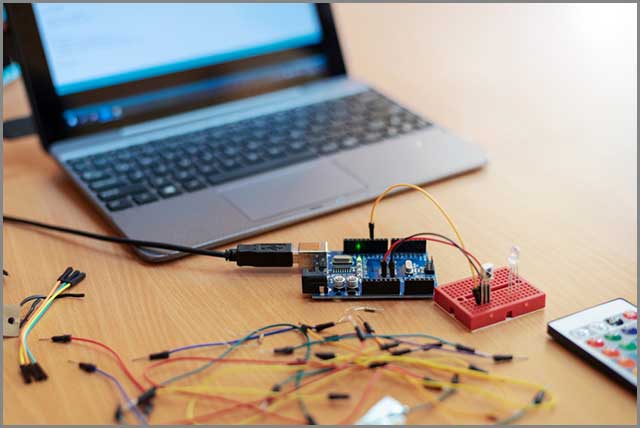
The Raspberry Pi 4 is compatible with most Linux distributions. One of these Linux distros happens to be Kali Linux.
Generally, network security specialists use Kali Linux primarily for penetration testing and forensics. Of course, you can repurpose its tools and use them for hacking.
With Kali Linux installed on your Pi, you can use it to spoof accounts, crack Wi-Fi networks and possibly hack into people’s cell phones.
Prerequisites
Converting your Raspberry Pi 4 into a hacking machine will require a lot more work than converting it into a VPN server. To achieve this goal, you will need the following:
- The latest Kali Linux
- A battery pack or another portable power source for your Raspberry Pi 4
- A portable touch screen and case for your RPi4
- A MicroSD Card with at least 8GB of Storage
- A mini USB keyboard
- A computer
[Video]
*Note: Although the above video tutorial refers to converting a Raspberry Pi 3 B+ into a hacking machine, these steps should work with a Raspberry Pi 4.
Raspberry pi 4– Raspberry Pi Seismometer (Raspberry Shake)
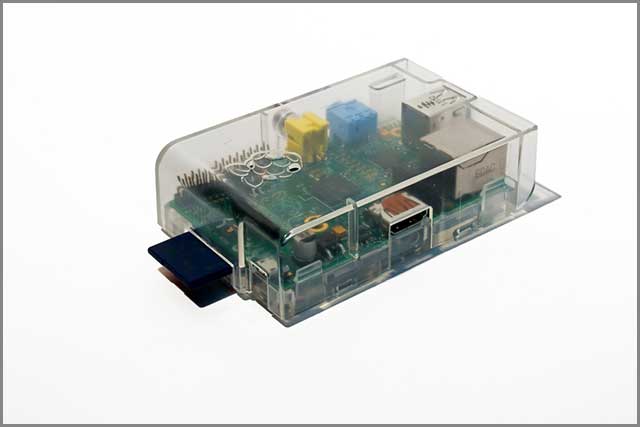
Not many people know that you can use your Raspberry Pi 4 to detect and measure the scale of earthquakes and tremors. You can essentially convert your Raspberry Pi into a digital seismograph.
Prerequisites
While the end product may still be compact, converting your Raspberry Pi 4 into a seismometer/seismograph will require a bit of work and skill. Here is what you will need:
2. RS1D board and geophone sensors
3. A micro SD with at least 8GB of storage capacity
4. An enclosure/case
For information about this project, you can visit the Raspberry Shake website. If you are looking for more instructions, you can visit the Magpi Magazine’s seismograph tutorial.
Raspberry pi 4– Netflix Raspberry Pi Streaming Device

Suppose you are a casual hobbyist who simply cannot afford the accessories that go into creating a project such as the Raspberry Pi seismometer. In that case, you may be better off converting your Raspberry Pi into a Netflix streaming device.
Prerequisites
You do not need much to convert your Raspberry Pi into a media center or streaming device. In addition to your RPi 4, you will need:
1. OSMC
For detailed instructions, you can try Daily Dot’s tutorial.
Raspberry pi 4– Raspberry Pi FM Radio Transmitter
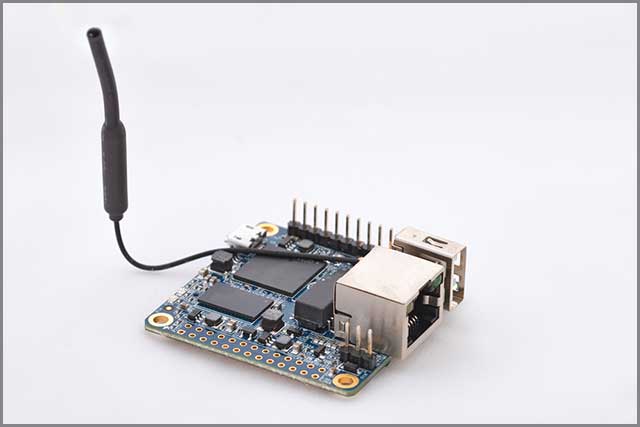
Radio broadcasting may seem like a dying art, but you can keep it alive by building your own FM radio transmitter using your Raspberry Pi. With just your Raspberry Pi and a few accessories, you can live out your aspirations of becoming a DJ or newscaster.
Prerequisites
You will not need much to use your Raspberry Pi 4 as a radio transmitter. This is one of the easiest projects on this list. Besides your Raspberry Pi 4, you will need:
1. A steady internet connection
2. A USB Microphone
[video]
Raspberry pi 4– Raspberry Pi Bluetooth Enabled Speaker System
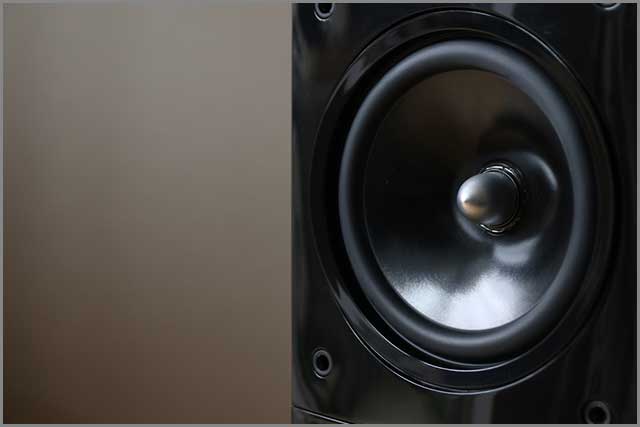
The Raspberry Pi 4 comes with Bluetooth 5. If you do not have Bluetooth speakers at home, you can use the Raspberry Pi 4 to convert your wired speakers into wireless speakers.
Prerequisites
If you do not have a Raspberry Pi 4, but you do have RPi 3 or Zero W, you can create a Bluetooth speaker system. In addition to one of those boards, you will need:
1. A micro SD card with at least 8GB of storage
2. A power supply
3. A 3.5 mm auxiliary cable
4. Speakers
5. balenaEtcher
For more details on how to execute this project, you can follow Balena’s tutorial.
Raspberry pi 4– Raspberry Pi Dedicated Office Productivity Machine
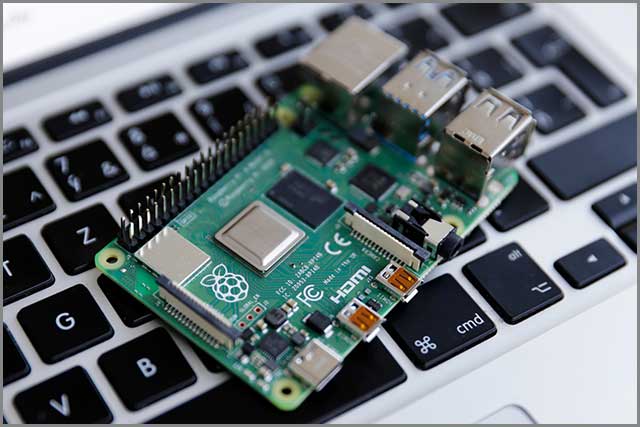
Despite the Raspberry Pi’s GPIO capabilities, it’s still a miniature computer and can work as such. If you’re working in an office and trying to save space, why not use a Raspberry Pi instead of a desktop tower or a laptop. That is the simple premise of this project recommendation.
Prerequisites:
This is one of the easiest projects to execute on this list. All you need to do is install a Linux Distribution on your Raspberry Pi and hook your RPi 4 to a screen, keyboard and mouse.
1. A micro SD card with at least 8GB of storage capacity
2. A Monitor
3. Keyboard
4. Mouse
5. Internet connection
Raspberry pi 4– Raspberry Pi JavaScript Learning Machine
The Raspberry Pi Foundation originally designed and built the Raspberry Pi to teach you the basics of programming and engineering. Thus, they have filled their official site with all types of project ideas and instructions. One of these projects is a Guess the Colour game that teaches you the fundamentals of JavaScript.
Prerequisites:
For the details of this project, you can visit the official course page.
Raspberry pi 4– Raspberry Pi Wi-Fi Booster
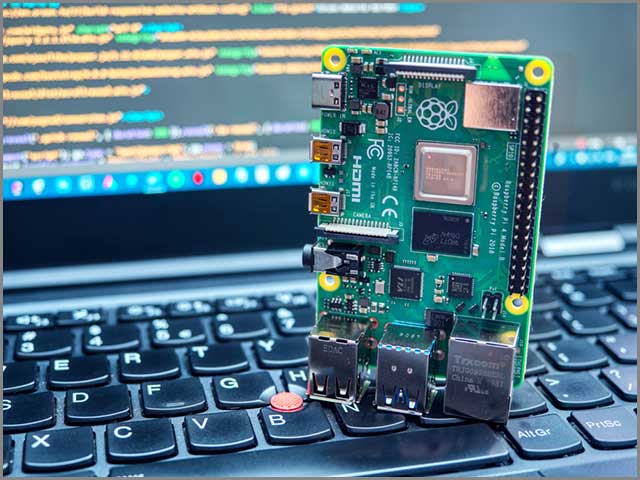
If you live in a large house or just have Wi-Fi reception problems in one of your rooms, you can fix this by installing a wi-fi booster if you have a Raspberry Pi 2, 3, or 4 lyings around, no need to purchase a new Wi-Fi extender. You can simply convert your SBC into a dedicated or part-time Wi-Fi booster.
Prerequisites
Building this project is straightforward and simple. You can use your Raspberry Pi’s internally built Wi-Fi. If you’re using an older Raspberry Pi (1 or 2), you’ll need a Wi-Fi dongle for it.
1. Micro SD with a storage capacity of at least 8GB
2. Power supply
3. Raspberry Pi Case
If you want to learn more about this project, you can visit PiMyLife’s Wi-Fi extender tutorial.
Raspberry pi 4– Raspberry Pi Ultrasonic Theremin
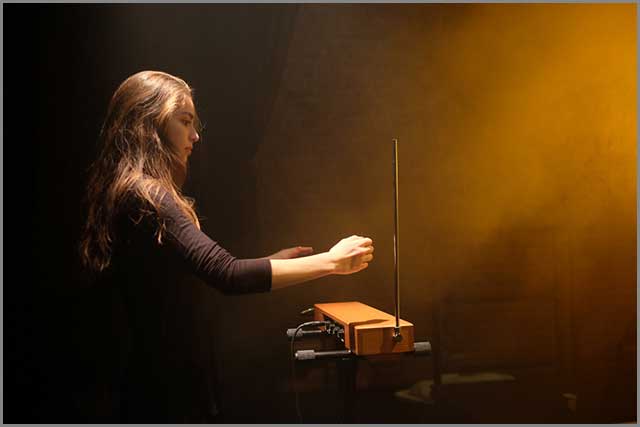
The theremin is an electronic musical instrument that Lean Theremin invented in 1920. It is one of the easiest instruments to learn to play. In addition to this, it is also an easy project to build with your Raspberry Pi 4.
Prerequisites
1. Sonic Pi (Raspberry Pi Software)
2. Python-OSC
3. 330-ohm Resistor
4. 470-ohm Resistor
5. Solderless Breadboard
6. Ultrasonic Distance Sensor
7. 3 * Male to Male Jumper Leads
8. 4 * Male to Female Jumper Leads
This is one of the more challenging projects on this list. It’s also one of the most rewarding and practical. In addition to this, it is incredibly educational. If you want to learn more about this project, you can visit the official project page.
Raspberry pi 4– Raspberry Pi Wall Mounted Google Calendar
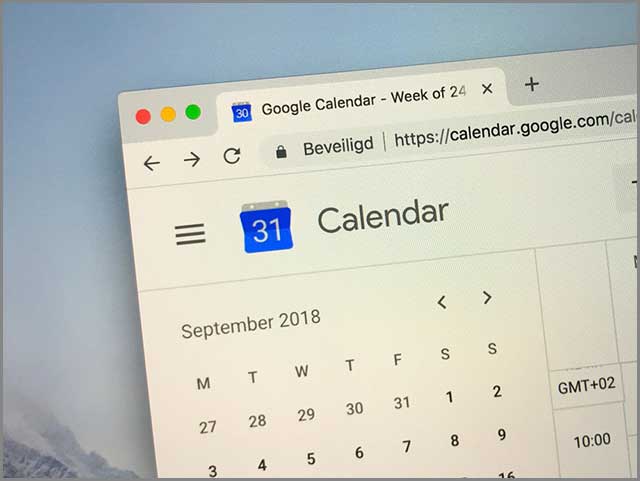
Since we have calendars on our phone, it seems that we do not need a wall-mounted paper calendar. However, it is sometimes easier to look up and remind ourselves of important dates without pulling our phones out. This project helps you convert an old screen and a Raspberry Pi into a wall-mounted digital Google calendar
Prerequisites
1. Wireless home network
2. Micros SD card with a storage capacity of 2GB or larger
3. Raspberry Pi power supply
4. Micro USB cable
5. USB keyboard and mouse
6. Monitor (preferably with HDMI port)
7. HDMI cable (or HDMI to VGA cable)
8. Wall bracket for your monitor
If you want detailed instructions for this project, you can visit the Instructables page.
Raspberry pi 4– Raspberry Pi AI Thermometer
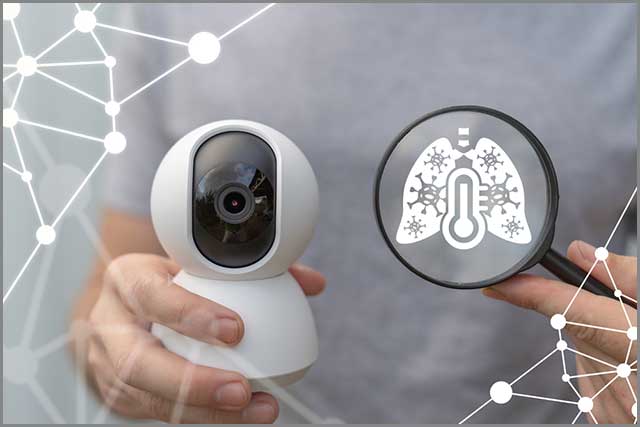
It would be better for those looking for a more challenging and useful project to convert your Raspberry Pi into an AI-enabled thermometer. This project will teach you some of the basics of working with AI on your Raspberry Pi. This thermometer is capable of measuring your skin’s temperature so it can determine whether or not you have a fever.
Prerequisites
1. IR Camera
2. RGB Camera
If you want further details on this project, visit Hackstar.io’s tutorial page.
Raspberry pi 4– Raspberry Pi Automatic Smart Plant Monitor
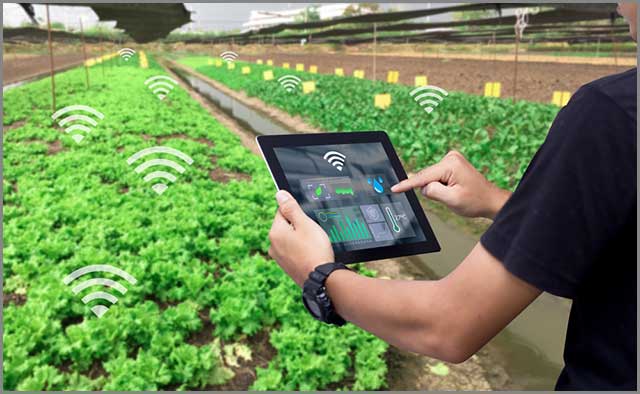
For anyone with a thriving career or demanding job, keeping track of your garden can be a tough ask. However, with a little ingenuity and expertise, you can build a smart garden monitor that keeps track of your plants’ lighting and moisture.
Prerequisites
This project will require you to use your Raspberry Pi board with an Arduino Uno board. This is the hardware you will need:
1. Arduino Uno Board
2. PARTICLE Argon
3. DHT11 Temperature and Humidity Sensor
4. SparkFun Moisture Sensor
5. CDS photoresistor
6. LED
7. Raspberry Pi Raspbian (Raspberry Pi 4 OS)
8. Arduino IDE
If you want a detailed set of instructions, you should visit Hackster’s dedicated page.
[video]
Raspberry pi 4– Raspberry Pi Remote Smart Camera Focus
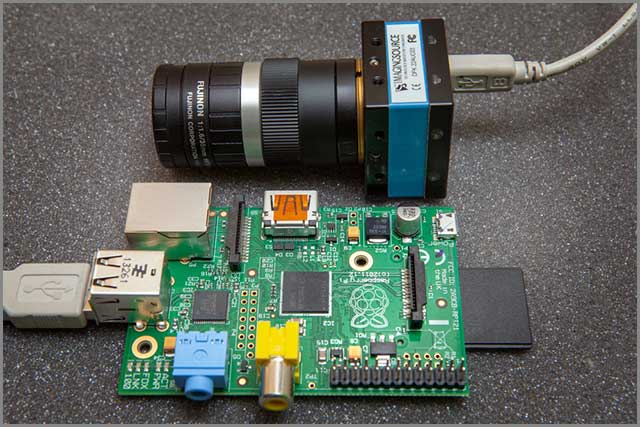
If you found that the Thermometer was a little tough for you, you can build a remote smart security camera with a focus. The Raspberry Pi Foundation makes this easy for you. All you need is their high-quality camera and a bit of python code.
Prerequisites
1. Raspberry Pi high-quality camera
2. Lego Part No. 18938
3. Lego Compatible Servo
4. Raspberry Pi Raspbian
5. Drill/Driver
Once again, for those looking for instructions, Hackster.IO has an amazing tutorial for you.
Raspberry pi 4– Raspberry Pi Intercom System
This project takes an old 1986 intercom system, refurbishes it, and updates it for the new millennium.
Prerequisites
1. Google AIY Voice Kit
2. Vintage Intercom
You can find the intercom on Radio Shack or eBay. For more details on this project, you can visit Instructables’ tutorials.
Raspberry pi 4– Raspberry Pi Photo Booth
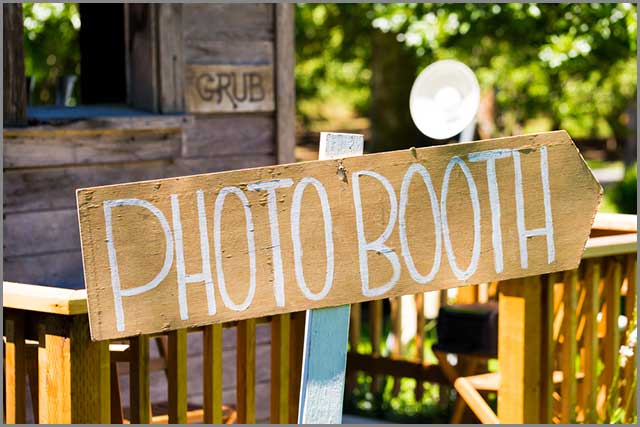
You can use your Raspberry Pi to create a smart photo booth that takes your picture and uploads it to Google Photos.
Prerequisites
To set this project up, you will need a few accessories in addition to your Raspberry Pi 4.
1. Raspberry Pi Camera Module
2. Micro USB Power Supply
3. Raspberry Pi Touch Display
4. Machine Screws, M2.5, 10mm x 2
5. Machine Screws M2.5, 6mm x 2
6. Machine Screws M2x6mm x4
7. Mounting brackets and/or enclosure (optional)
8. Hex nut, ¼-20 (optional)
Once again, Hackster.io has a lovely tutorial for this project.
Raspberry Pi Sleeping Cycle and Light Alarm Clock
Alarm clocks can be loud and intrusive. The alternative to this is an alarm that plays soothing sounds or displays a light that gently wakes you up. You can either purchase an orb that emits light depending on the time of the day or just build one yourself using your Raspberry Pi 4. This is the premise of this project.
Prerequisites
This project combines some of the components we introduced with the other projects in this guide.
1. Active Speaker
2. 3 x 1 Watt RGB LEDs
3. Raspberry pi 4 fan
4. Raspberry Pi 4 heatsink (optional)
5. 2 x temperature sensors
6. 1 x light sensor
7. 2 x accelerometers
8. 1 x pushbutton
For more information on this project, you can visit Instructables’ tutorial.
Raspberry Pi Pen Plotter
The Raspberry Pi Brachiograph’s creators have dubbed it as one of the simplest yet artistic drawing devices on the market. In essence, it looks very rudimentary. You can make it with a few wires, a peg, and an ice cream stick. It is a fun and educational project to undertake.
Prerequisites
1. 2 x wooden craft sticks
2. Pen/pencil
3. Clothes peg
4. 3 x servo motors
5. Glue
You can learn more about the BracioGraph on its official page.
Raspberry Pi Email Notifier
Email messages and mailboxes can feel like esoteric and abstract concepts. The only way you can access your email messages is through a device. Thus, receiving alerts for new mail is the most common way through push notifications and other digital alerts. This project allows you to make your email notifications more physical. This project will light up whenever you get a new email message.
Prerequisites
1. Protoboard
2. Raspberry Pi USB power supply
3. Raspberry Pi Compatible USB Cable
4. 22AWG Stranded Wire
5. 10K-Ω resistor x 5
6. 220-Ω resistor x 5
7. white LEDs x5
8. Plywood (5mm and 3mm)
9. N-Channel Power Mosfet transistors
10. Paint
11. Various screws and nuts
12. Glue gun
For a more detailed hardware list and instructions on building this project, you can visit Instructables’ comprehensive tutorial.
Brew
Is brewing IPAs one of your favorite hobbies? Thanks to technology, you can make brewing your beer a lot easier. You can use your Raspberry Pi to track your brew’s temperature, adjust it, and document all of its information.
Prerequisites
1. Hacked Fridge
2. BrewPi Spark
3. Computer, phone, or tablet
For a more detailed list of tools and hardware, you can visit the official Brewpi project page.
Raspberry Pi Light Painter
In this project, you will be creating your very own Aurora Borealis with a set of LEDs, a camera, and a Raspberry Pi.
Prerequisites
1. Digital Addressable RGB LED strip
2. DC Power Jack
3. 2 Amp power supply
4. 10 Amp power supply
5. Pi Cobbler breakout kit
6. JST 4-pin inline plug & receptacle cable
Adafruit Raspberry Pi Educational Linux Distro
For more information about the tools, hardware, and prerequisites for this project, visit the official Adafruit project page.
Raspberry Pi Cluster Computer
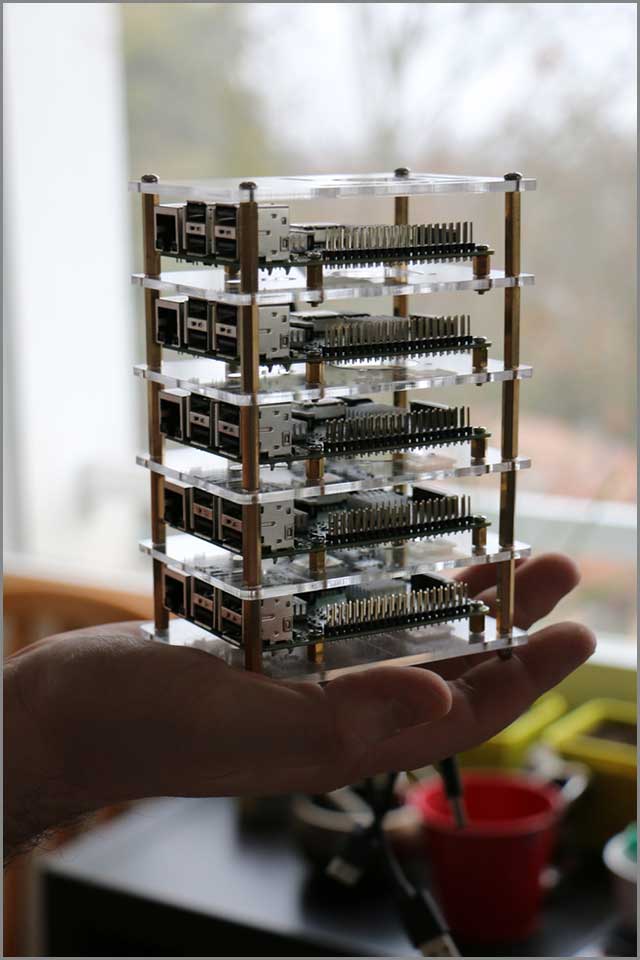
The Raspberry Pi 4 works well as a bottom tier or mid-range standalone computer. However, if you combine a set of Raspberry Pis, you can create your very own supercomputer.
Prerequisites
1. 4 x Raspberry Pi 4
2. Raspberry Pi 4 Cluster Case
3. Ethernet switch
4. Multiport USB PSU
5. USB C Cables
6. Ethernet cables
For a more detailed hardware list and the instructions on building this project, visit The Magpi tutorial page.
Raspberry Pi Smart Garage Door Opener
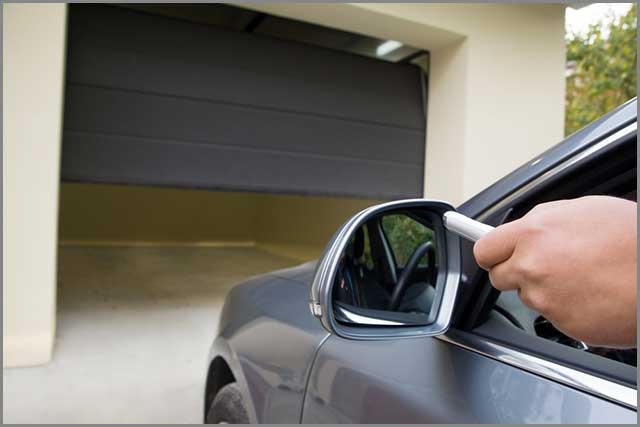
Thanks to the Internet of Things, you can access all your IoT-enabled smart devices from smartphones or PCs. You can also do this using your Raspberry Pi 4.
Prerequisites
1. Raspbian
2. Relay module
3. Connecting wires
If you want more details on this project, you can visit CircuitDigest’s official tutorial. In addition to this, we recommend that you visit the Raspberry Pi Lock website to learn more about using RFID with your Raspberry Pi 4.
Raspberry Pi Android TV Box
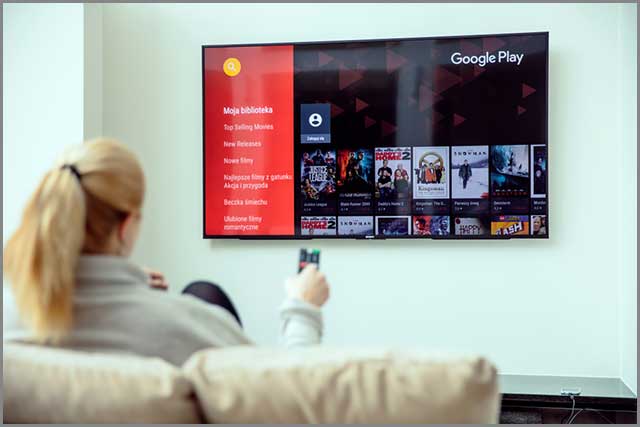
Earlier in this guide, we spoke about converting your Raspberry Pi into a streaming device. This works on the same principle, but instead of using your Raspberry Pi for Netflix, you can use it as an Android media box.
Prerequisites
1. A micro SD card with a storage capacity of at least 8 GB
2. A power source for your Raspberry Pi
3. USB keyboard and mouse/ combo remote
4. USB Flash drive with a storage capacity of at least 4 GB
5. An HDMI cable
6. Unofficial Lineage 17.1 for Raspberry Pi 4
7. Opengapps
8. Etcher SD card writing software
For more details on how to execute this project, visit the Make Use Of tutorial.
Raspberry Pi Object Tracker

If you have ever been interested in teaching yourself about deep learning with a Raspberry Pi 4, this project is for you. Astute users will combine it with the Raspberry Pi Brachiograph and draw the objects that the Raspberry Pi object tracker detects.
Prerequisites
1. Raspberry Pi Camera V2
2. Pimoroni Pan-tilt HAT Kit
3. Micro SD Card 16+ GB
4. Micro HDMI Cable
For detailed instructions on building this project, you Towards Data Science have an awesome tutorial that you can follow.
Raspberry Pi ADS-B Receiver

An automatic dependant surveillance-broadcast receiver (ADS-B) is a form of surveillance technology used to track airplanes. You can build your own PiAware ADS-B ground station.
Prerequisites
We recommend that you use a Raspberry Pi 4GB for this project. Other than that, you’ll need the following:
1. Micro SD card with at least 8GB of storage capacity
2. Power supply for Raspberry PI
3. Micros SD card reader for your computer
4. USB SDR ADS-B Receiver
5. 1090 MHz Antenna
For more details, you can visit FlightAware’s Pi Aware tutorial.
Raspberry Pi Christmas Tree Light Show

You can use your Raspberry Pi to make your Christmas decorations a new dimension. This project may seem straightforward, but it will require you to work with relays and LEDs.
Prerequisites
1. Micro SD Card (2GB+)
2. SainSmart 8 Channel 5V SSR Module Board
3. Jumper wires
4. JST 4-pin inline plug & receptacle cable
5. 32ft roll of wire (or four 8 ft pieces of wire)
6. Extension cord x 8
7. 2 x Power distribution block
8. Power strip
9. 5 Volts, 3 Amps or greater to drive LEDs and Pi power supply
10. 5 Volts, 1 Amp or greater to drive SSR module power supply
11. Enclosure
12. Speakers
For more detailed instructions and a list of hardware, you will need the star and tree and pay a visit to the Instructables tutorial.
Raspberry Pi PirateBox

A pirate box allows you to share files offline anonymously. You can use it as a portable offline file or media center.
Prerequisites
- Micro SD Card (8GB+)
- 5V micro USB power supply
- USB Flash Drive
- Ethernet cable
- PC with an ethernet port
- 5V USB Battery
Visit the official PirateBox site for additional instructions.
Conclusion
There you have it. In this guide, we featured 28 of the best Raspberry Pi projects. We made sure that all these projects were ideal for beginners. However, even intermediary Raspberry Pi users can gain a bit of enjoyment from building some of these projects. If you want a more game-oriented endeavor, you can try building a Raspberry 4 Retropie console. For more project ideas, you can visit any Raspberry pi 4 Reddit subreddit. Alternatively, you can simply run Windows 10 on your Raspberry Pi 4 and use it as a computer. Nevertheless, we hope that you have found this guide helpful. Thank you for reading.
